In this example we will use time windows to optimize processes in our supply chain. We will also use partial shipments to increase the service level by insignificantly increasing transportation costs.
A company that produces biodegradable food packaging wants to increase the efficiency of its supply chain by introducing the partial shipments mechanism. A variation experiment is used to see how the changes affect the supply chain.
We consider a supply chain in Germany with:
- 40 customers (spread over the whole country)
- 3 suppliers of raw materials (corn starch, bamboo fiber, beeswax) that are used to produce the required product
- 4 distribution centers supplying the customers
- 1 factory producing the required product

- Distribution centers accept incoming requests from customers within the working hours only (8 AM, 8 PM).
- Demand is of periodic nature, and is proportional to the population of the cities. Demand values are defined via the triangular probability distribution.
- Factory working shifts are 5 / 2 (8 AM — 7 PM).
Acquire schedule of shipping, loading, and unloading processes. The obtained data on all orders will be available in the Orders Table statistics.
To create the required scenario without the partial shipments mechanism we complete the following steps:
-
We define demand via the triangular probability distribution, which varies the time period, within which the orders are placed:

- Then we define sourcing, shipping policies. The inventory policies are set to Order on demand by default.
-
We create products (3 raw materials, 1 end-product), three of which will be used in BOM for the end-product production:



-
And we also add time windows to organize working shifts at the factory, and operating hours for the distribution centers:

If we run the Simulation experiment at this point, we will:
-
See that the factory has working shifts:
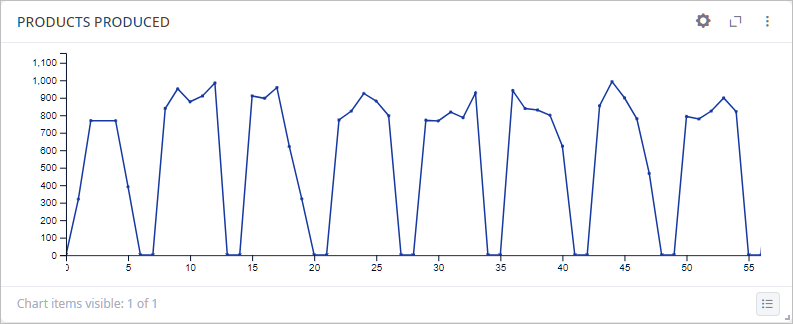
-
Acquire data on all operations with orders:

The issue here is that the distribution centers aggregate the orders they receive from the customers into one order before sending them to the factory. And unless all the products required for one aggregated order from a distribution center are produced, not a single inventory fulfillment delivery will be made by the factory. This issue can be fixed with partial shipments.
First, we check the service level the supply chain offers before the partial shipments are introduced:
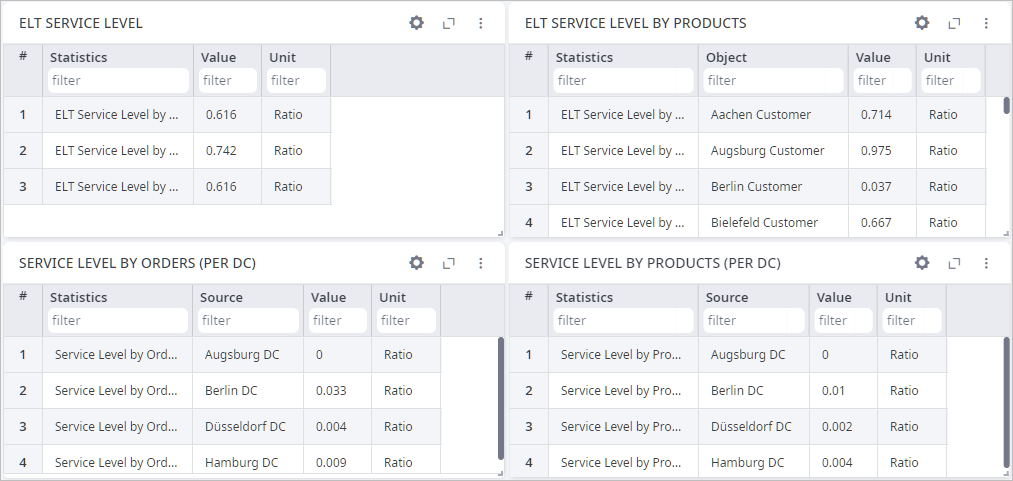
Then we check statistics on vehicles used in the supply chain before the partial shipments are introduced:
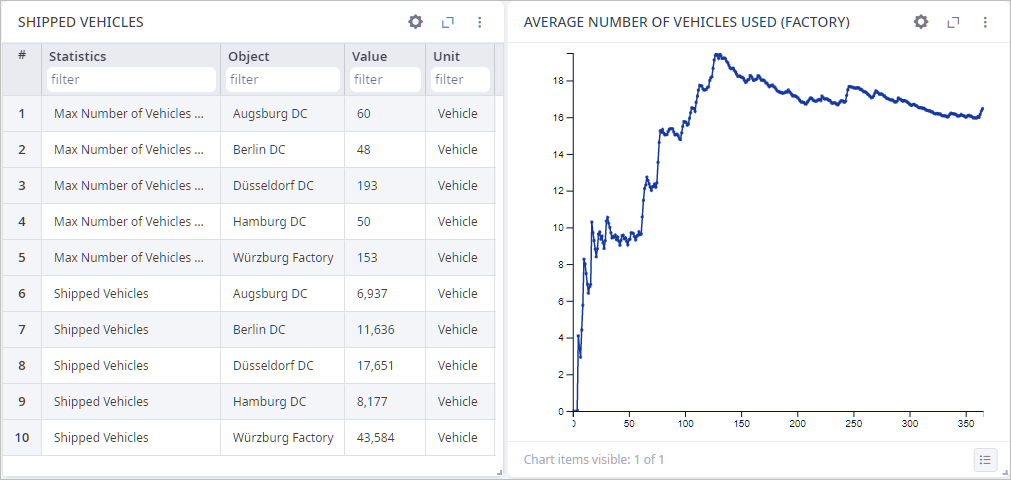
To activate the mechanism of partial shipments we need to adjust inventory policies of the distribution centers by changing the Minimum Split Ratio value in the Inventory table. Since we do not know the optimal value, we will use the Variation experiment to determine it.
Having defined the variable parameter, we run the experiment:
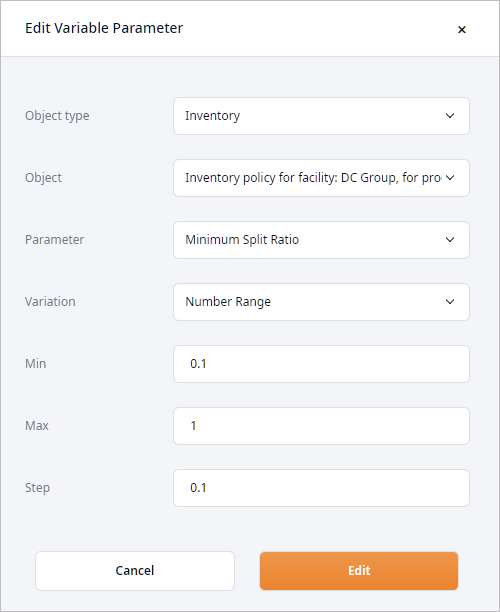
The result of the experiment suggests us to have the order split value of 0.2 (sort the Mean column of the ELT Service Level by Orders statistics). This will allow our factory to send shipments that contain at least 20% of the demanded amount:
The result may differ, that is why using replications is recommended.

Having found the optimal split ratio, we define it in the Minimum Split Ratio column of the Inventory table for the record containing policy for the distribution centers:

Now we run the Simulation experiment again to see how it worked out for our supply chain.
The service level increases with the partial shipments, since the factory now ships fulfillment orders once it has produced at least 20% of the demanded amount:
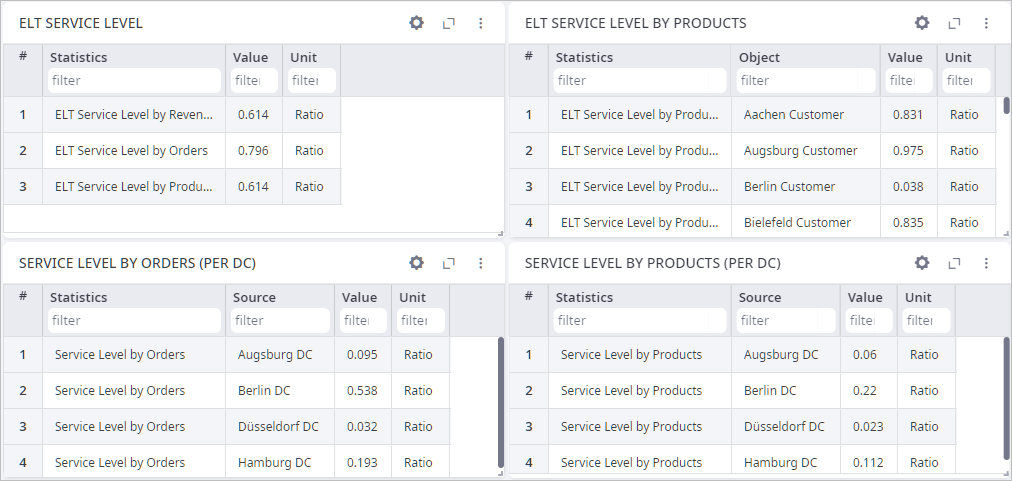
And if we check the vehicles utilization, we will see that less vehicles have been used, but they have made more deliveries:
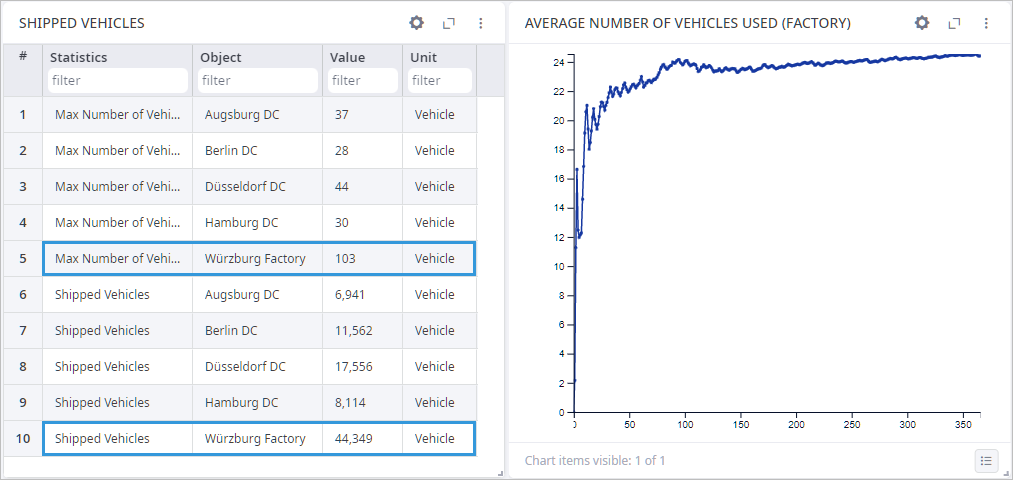
Time windows allow your supply chain processes to have better setup. The partial shipments mechanism (when properly defined) offers better service level at the expense of the increased transportation costs.
-
How can we improve this article?
-

